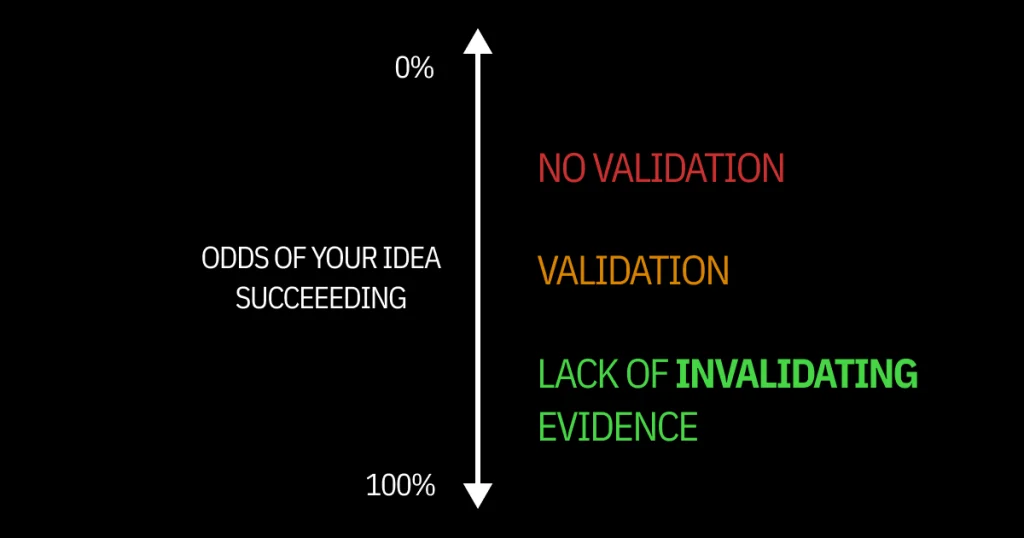
Starting a business is always a risk. A common way to “reduce risk” is to get validation for our ideas before we begin. Whenever we get that pre-sale, talk to that person who says they’d “love to try out our product” or get great reactions to our prototype, we’re trying to get as close as possible to paying customers before we actually commit and start the business.
There are two problems with this.
- We can never be completely sure that people will pay until we actually start the business.
- Our validation efforts may be misleading and built on fragile foundations. We might be asking leading questions, getting only words (instead of financial commitments) from people and even becoming too involved with our potential customers to the point where we contaminate their opinions with ours.
Validation increases our optimism (truly or falsely), but never leads to certainty.
It is definitely necessary to validate to prove that an idea could possibly work. But past a certain point, more validation isn’t useful. Instead, you need to be pessimistic and try to disprove your idea to increase your odds of success.
Rather than looking at all the ways it could possibly go right, you now need to collect data and scrutinise all the ways it could go wrong. This is where invalidating your ideas comes in.
According to Karl Popper’s Falsification Principle, since we can’t observe the universe at all times and in all places, it doesn’t make sense for us to make a general rule from our small sample observations. All it takes is a single counterexample for a theory to be proven wrong.
So we can only claim our theory to be true because we couldn’t find any reasons it’s false after trying and trying for ages.
In business terms, for all the reasons people might like your product, it takes just one good reason why they might not like your product for it to fail. For all the reason your business could work, it takes just one reason why it couldn’t. Through invalidation, it’s your job to find these reasons.
To get started with invalidation, all you have to do is flip your validation questions around:
- “Would you use this product?” → “Why wouldn’t you use this product?”
- “What were the major benefits you found using this product?” → “What were the major drawbacks of using this product?”
- “How much would you pay for this?” → “Why wouldn’t you pay for this?”
Start with your riskiest assumptions first. For instance, if you think charging $100 per month for your SaaS is the riskiest assumption, ask people “Why wouldn’t they pay $100 per month to use it?”.
If at the end of your invalidation efforts, you haven’t found many meaningful reasons why you could fail and your optimism remains, you’ve got a solid foundation to start a business on.
Note that the point isn’t to find ideas that 100% won’t fail because there are always going to be reasons why you could fail – that’s just the nature of business and taking risks. The point is to challenge your assumptions that are built on quicksand and increase your odds of success. Get a theory that could work first with validation, then reinforce its validity with invalidation efforts.